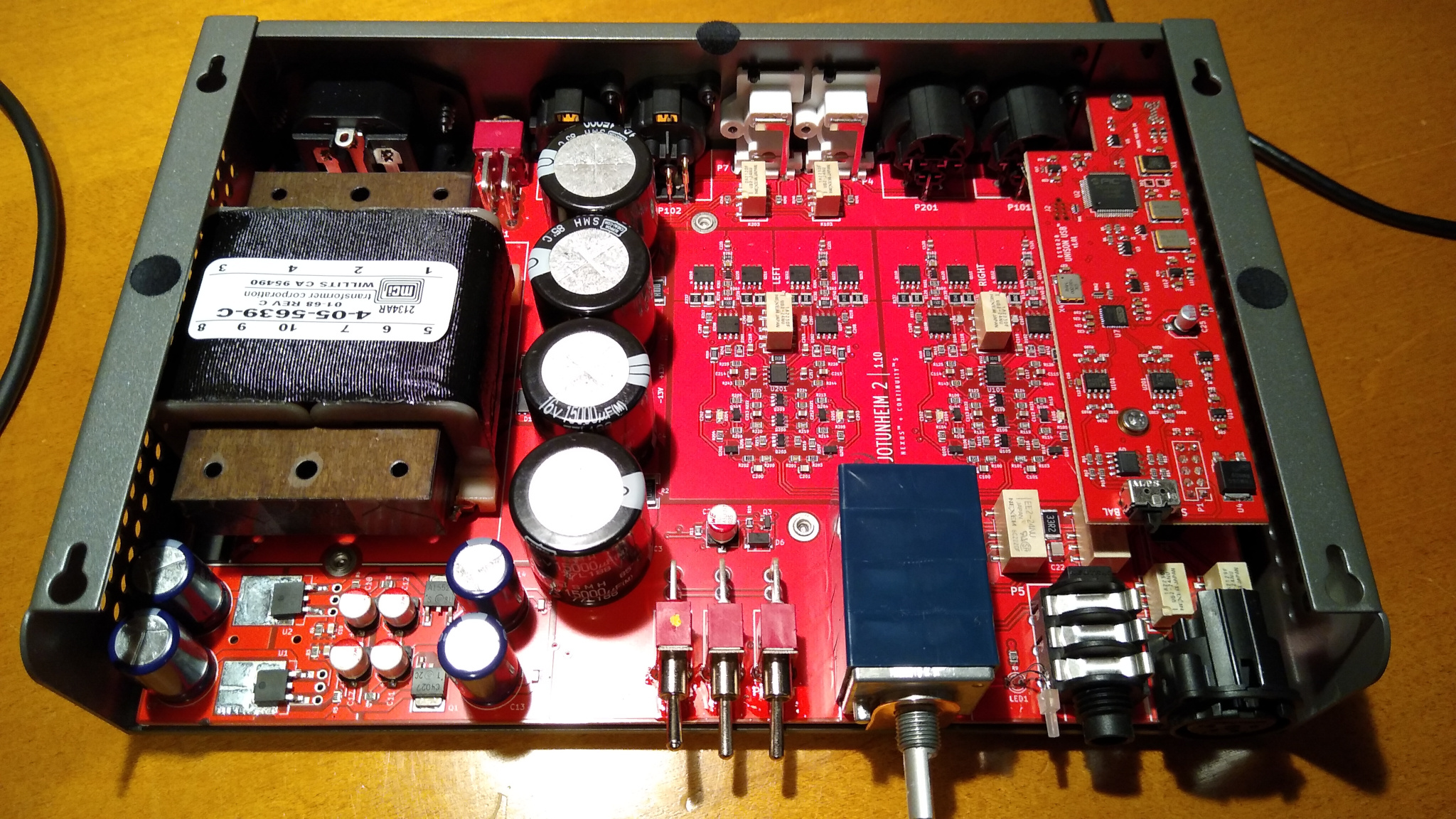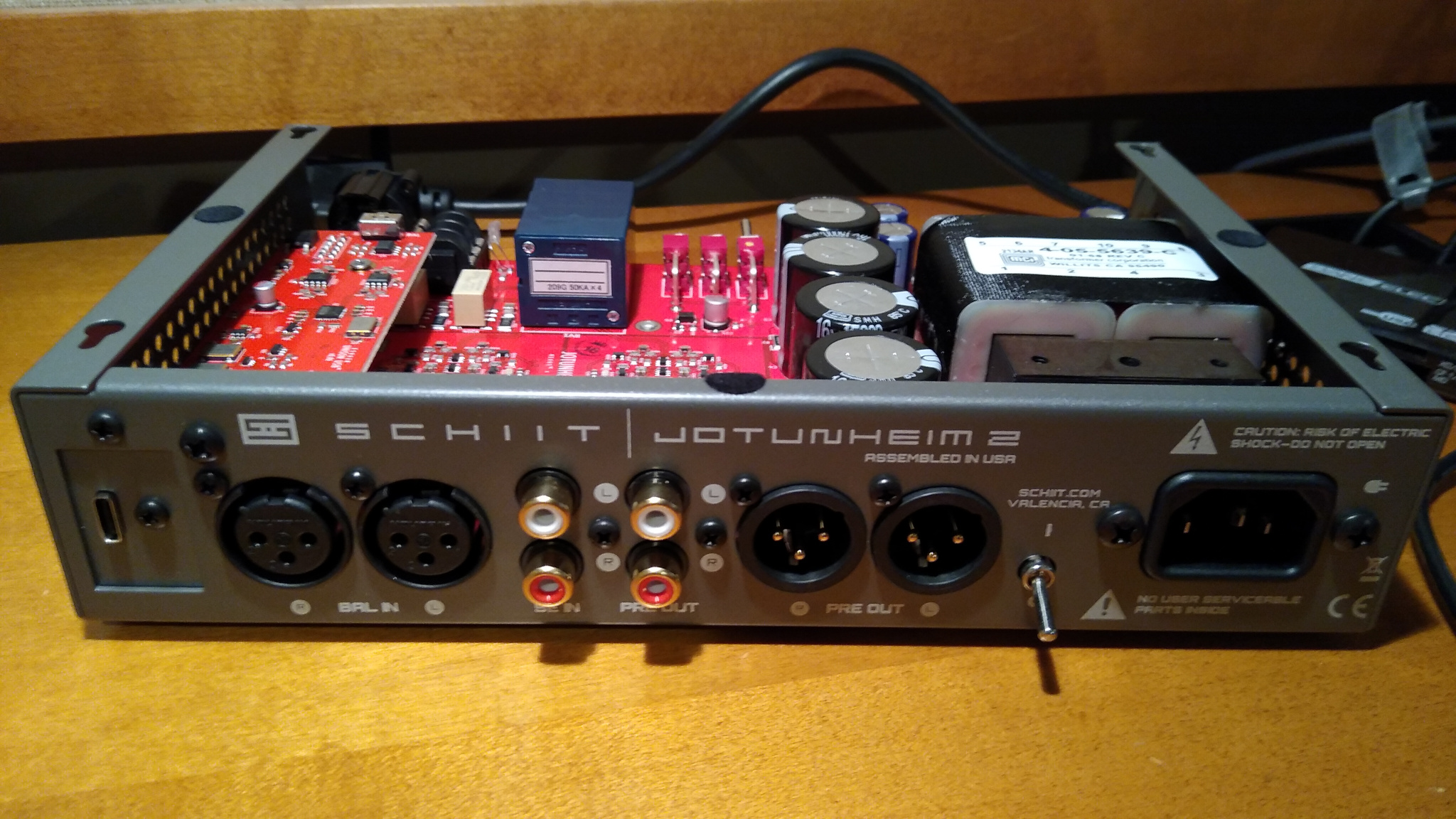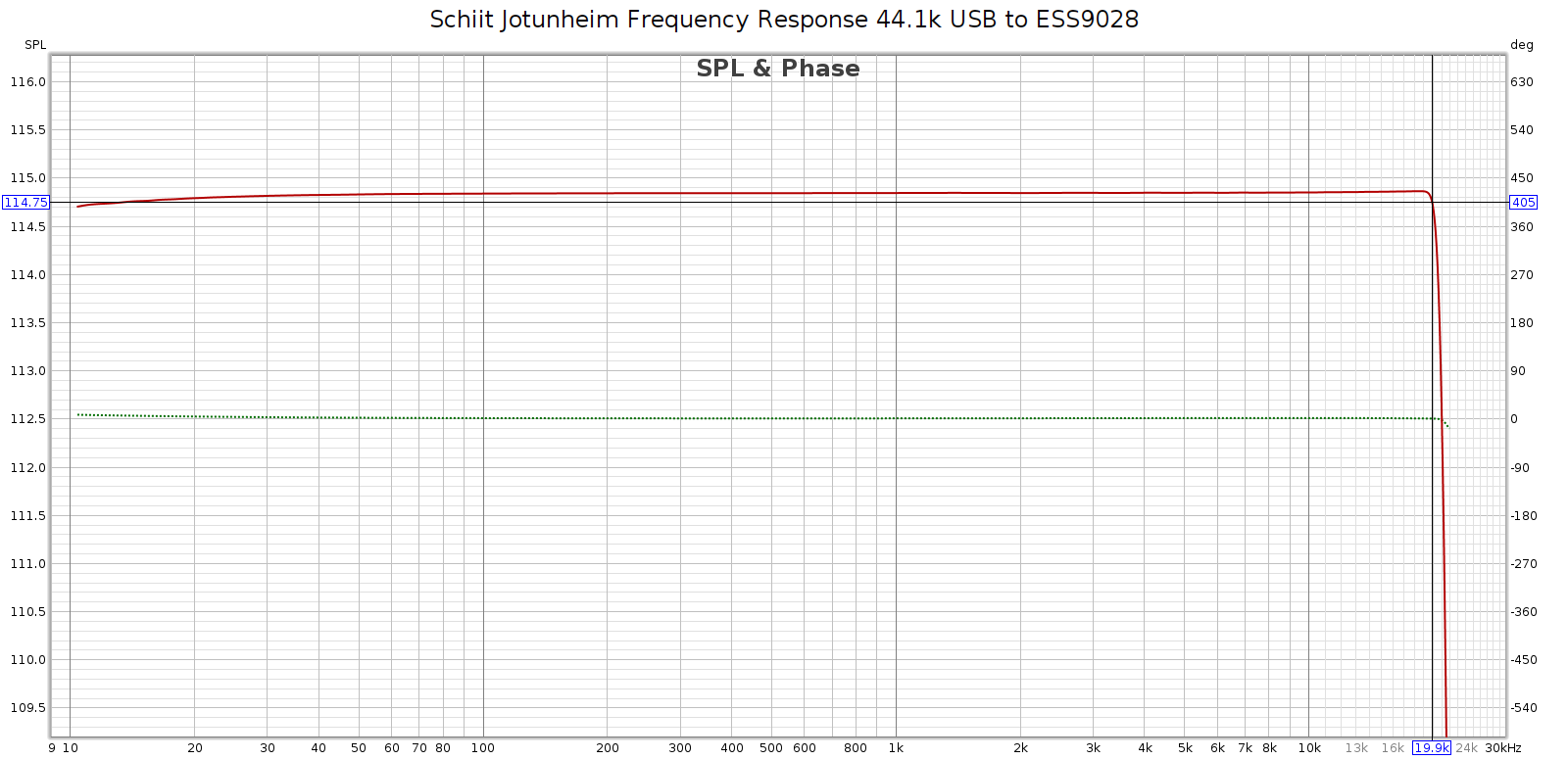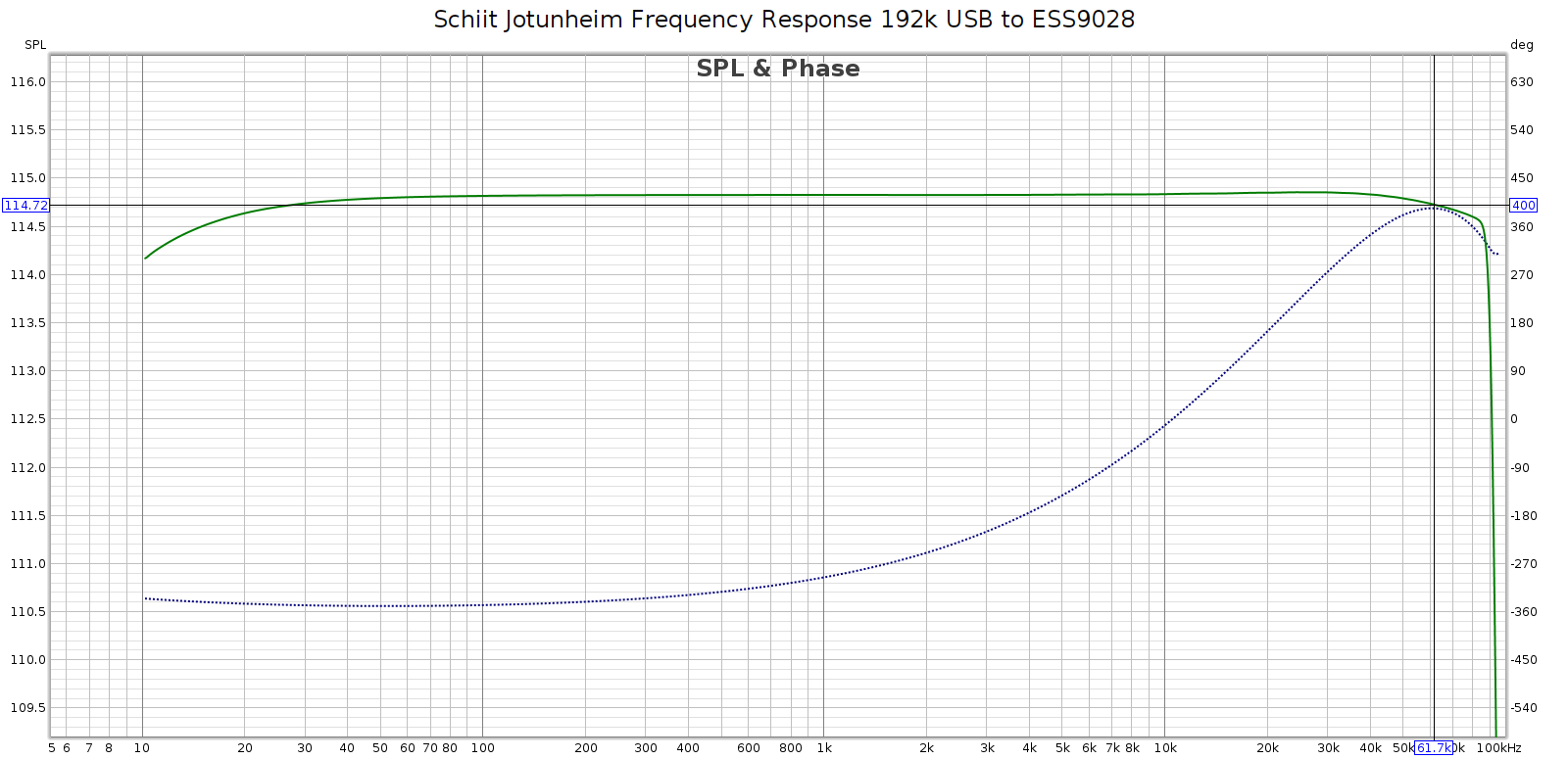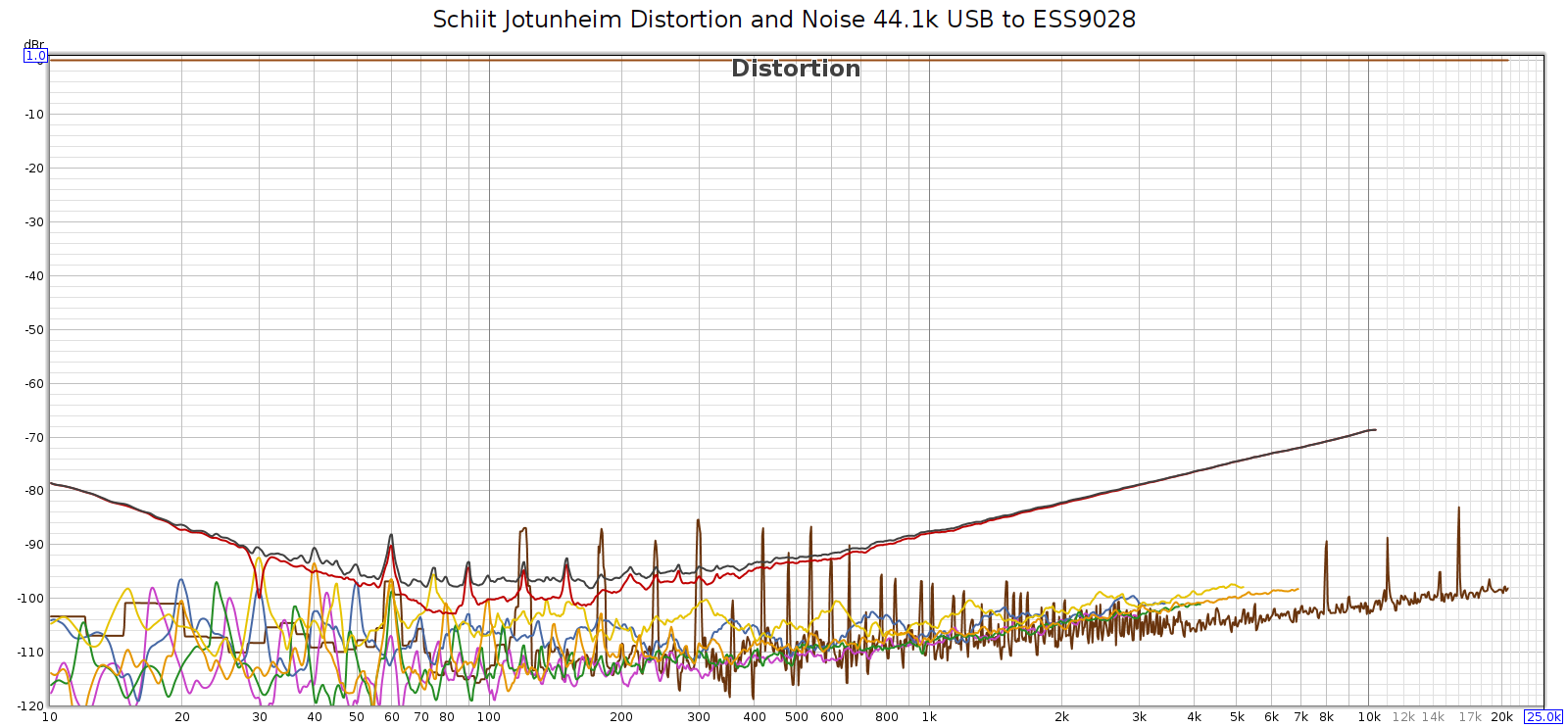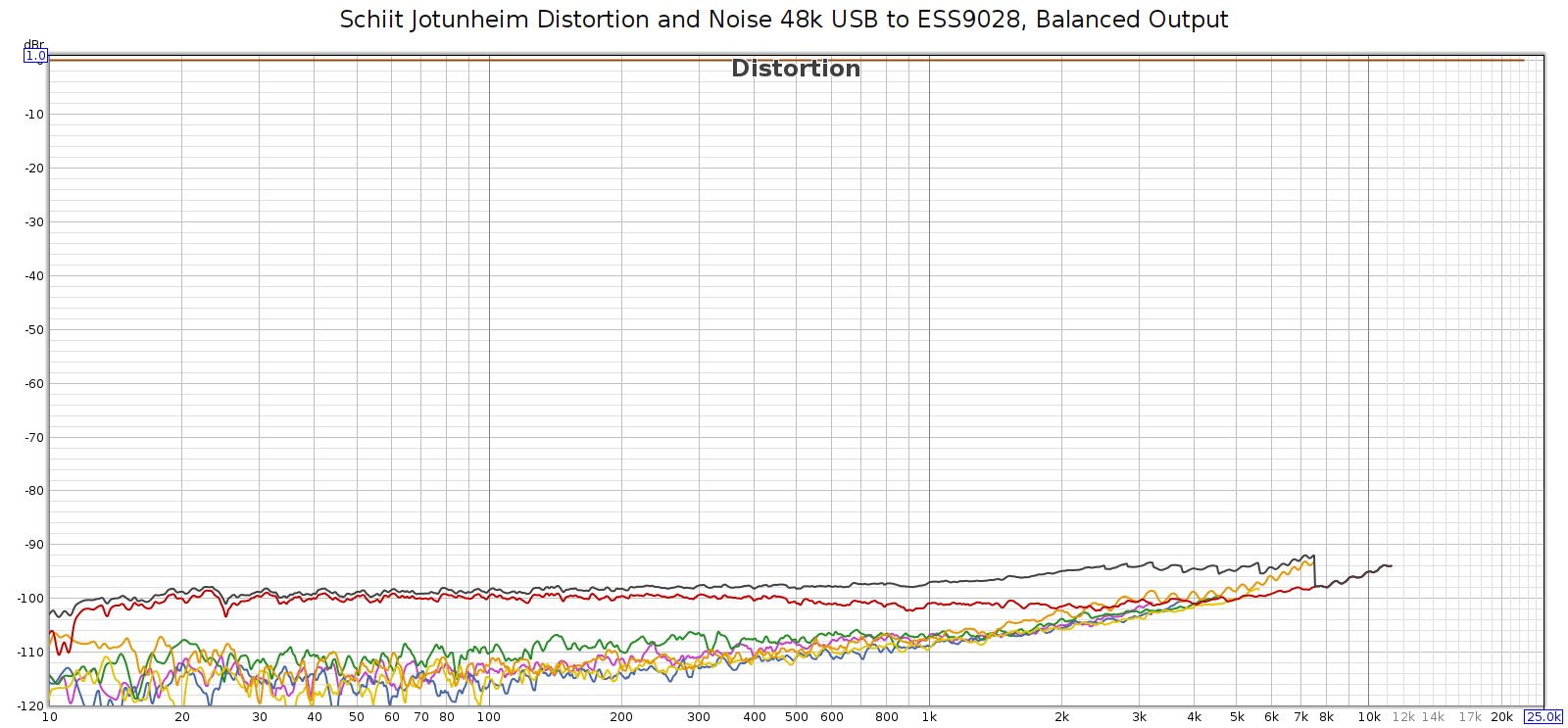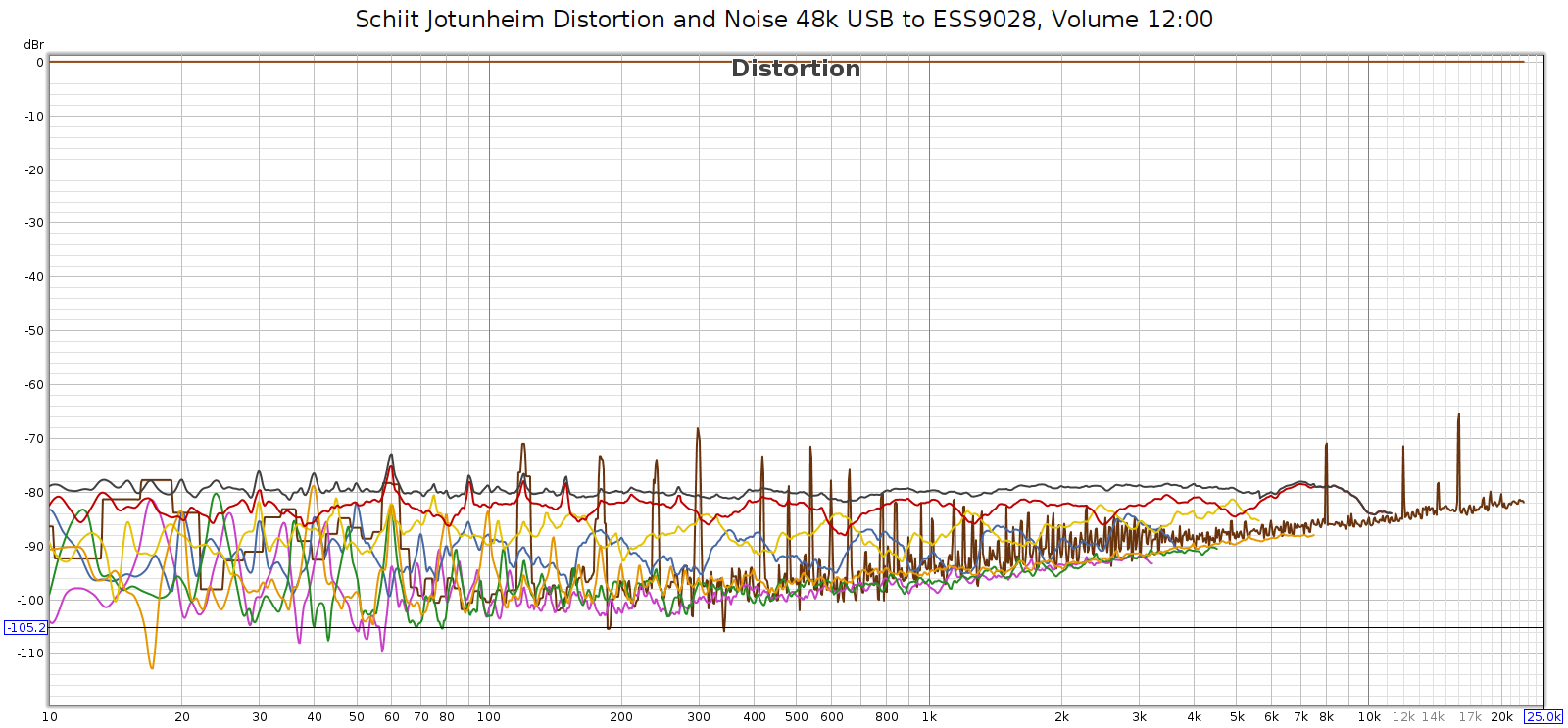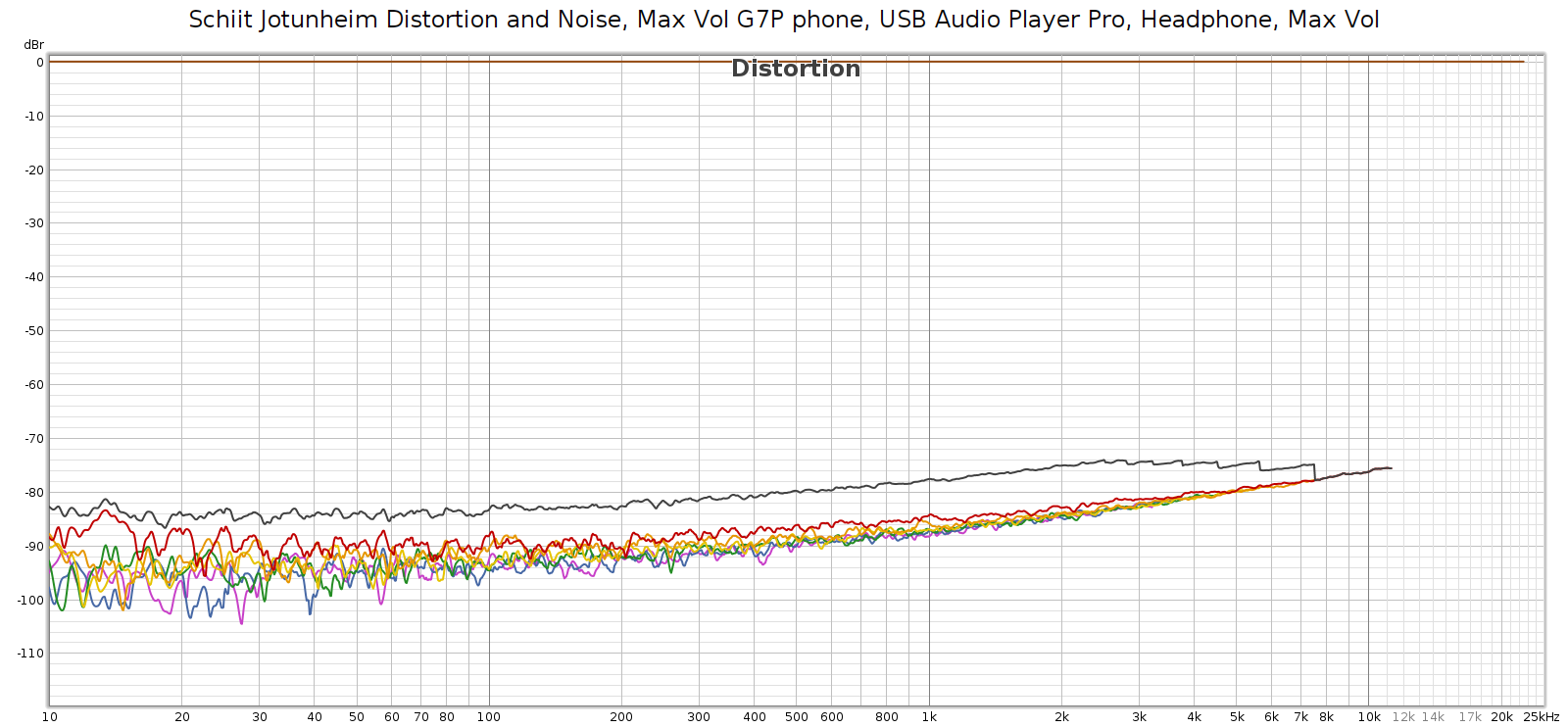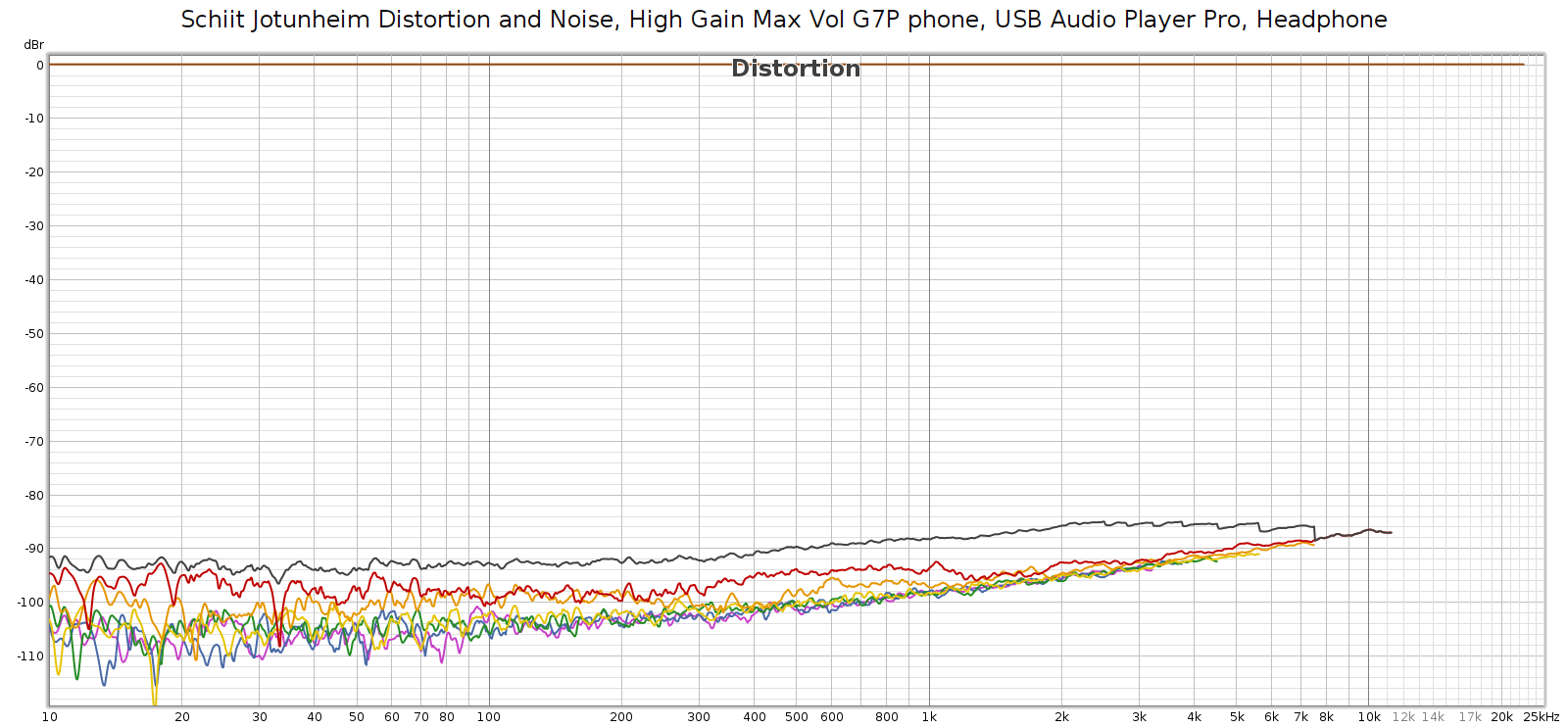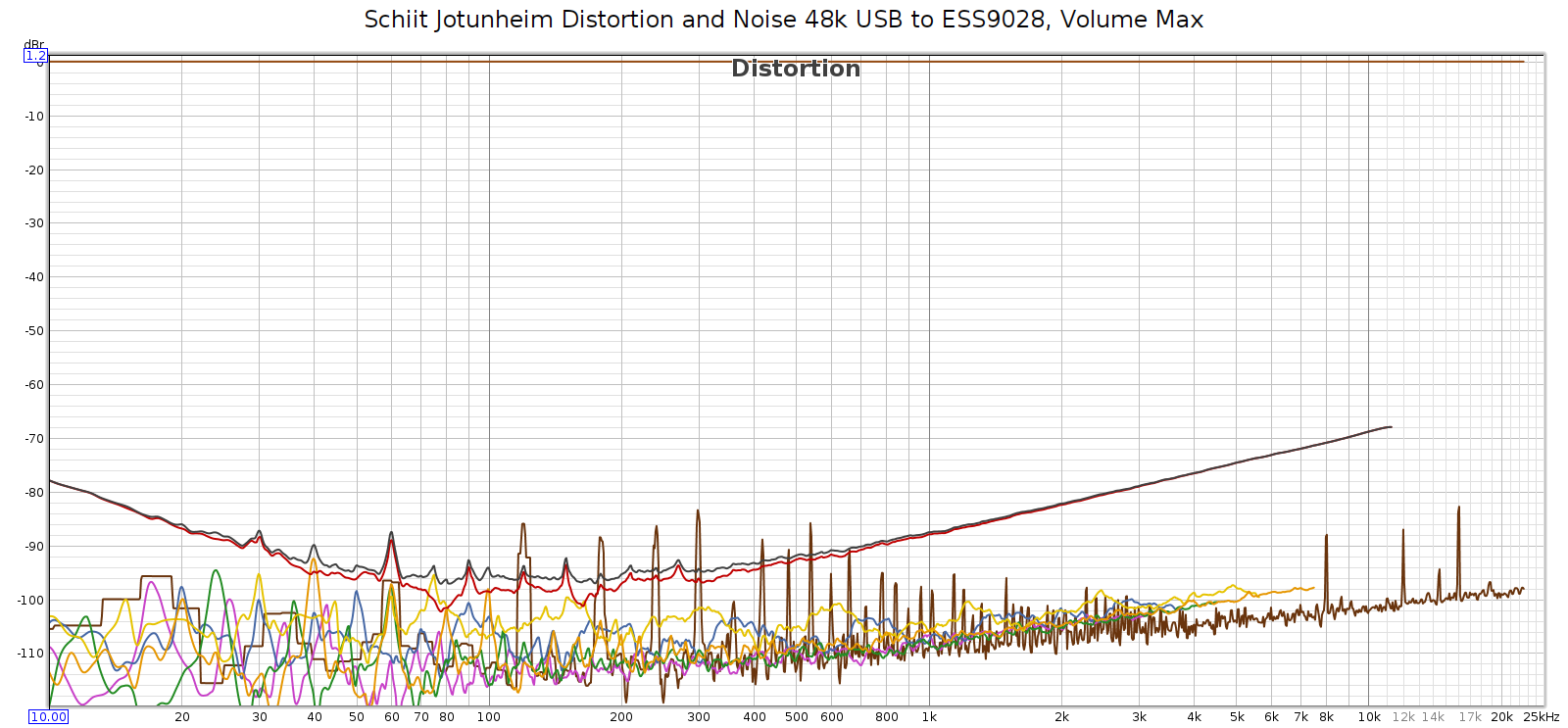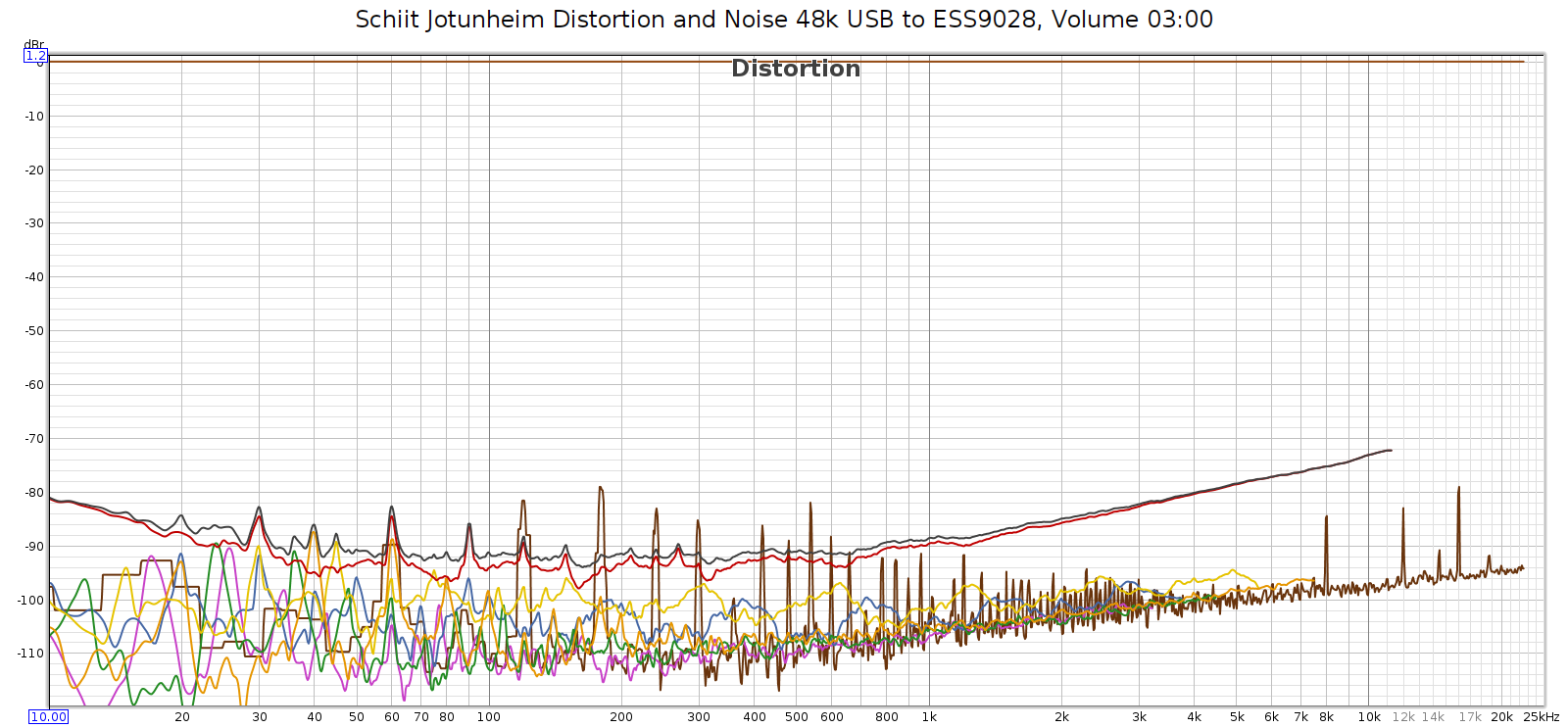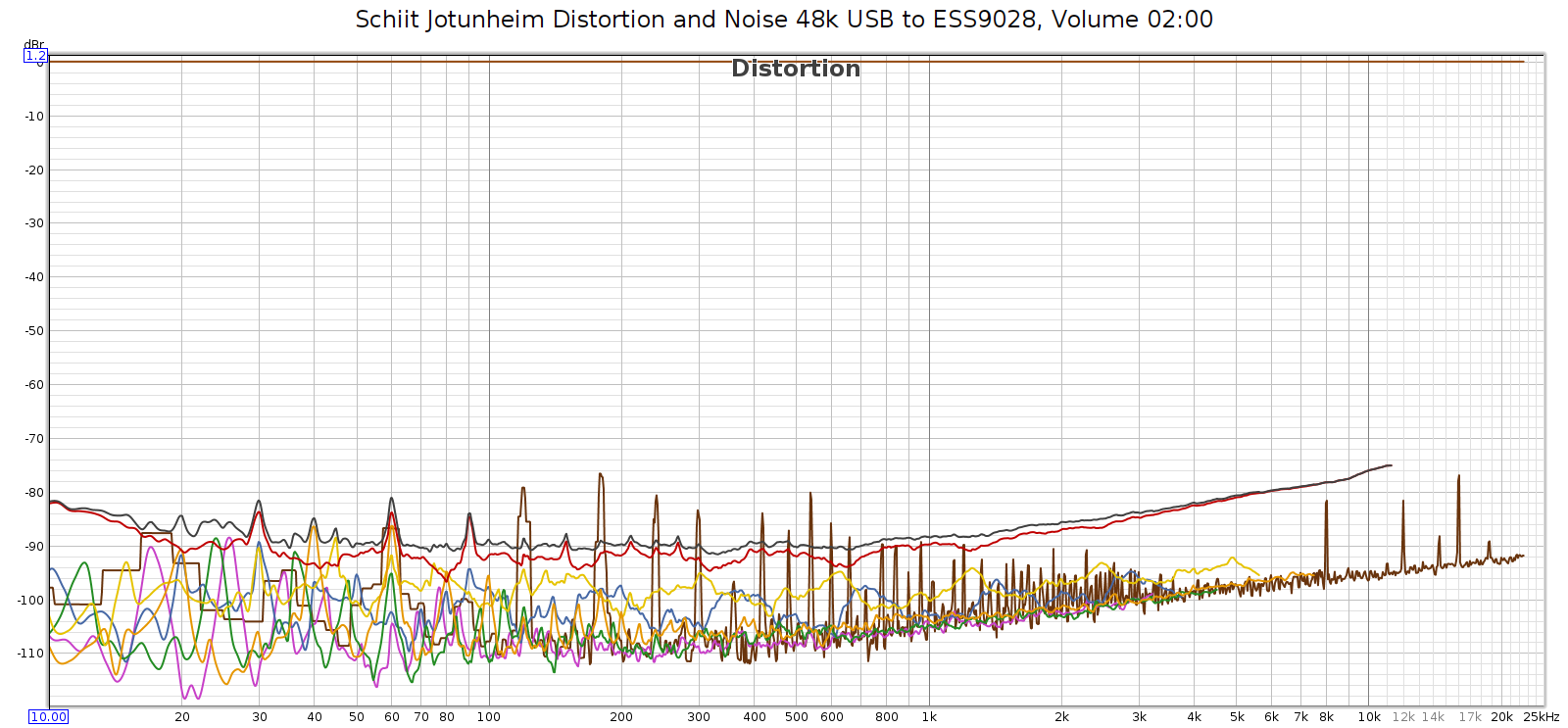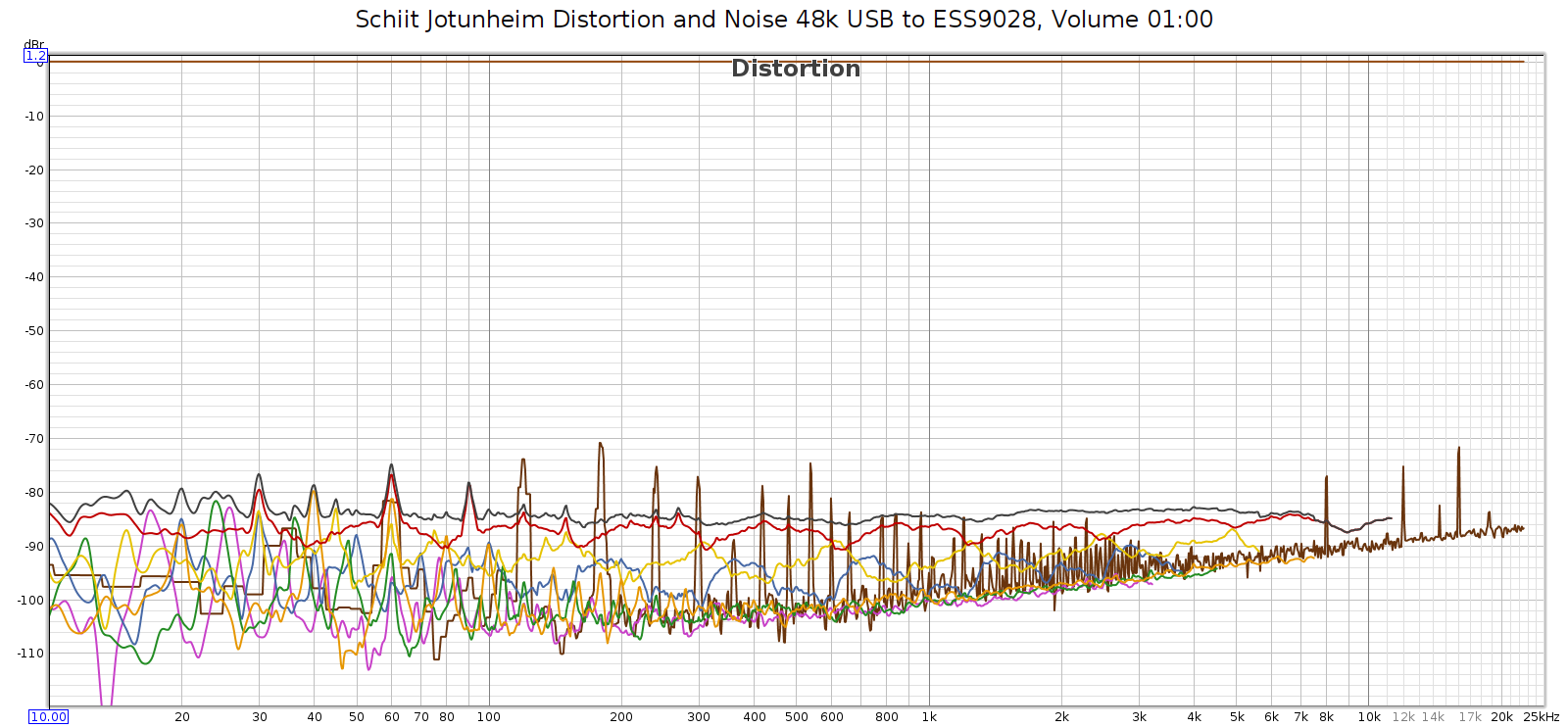Introduction
Note: about a year ago I got an SMSL SU-6 DAC. More on that here.
I’ve always enjoyed listening to music on headphones at work. As we are returning to the office, I want to have high quality audio listening. My Etymotic ER6 IEMs sound great, but (A) they isolate all other sounds, so when people walk by and say “hi” I don’t even hear them, and (B) they don’t reproduce the top half-octave, so while they do sound clean, there’s something subtly missing. I still have my old Sennheiser HD-580 which are still as good as new, but they have low voltage sensitivity so I needed an amp to drive them.
I wanted to play music from my phone (USB Audio Player Pro), my laptop, or my desktop. And most (but not all) my music is on a small external hard disk which occupies the phone USB port, so when playing from the phone I may use its USB output or its analog headphone jack. But when playing from the laptop or desktop, I’ll use USB since their built-in DACs are crappy and don’t handle sample rates above 48k.
So I needed an audio device that is a DAC with USB input, also analog input, with a built-in headphone amp. Furthermore, I have limited power plugs at work so I couldn’t use separate devices having external wall-wart power supplies. I needed this to be a single box with an internal power supply and standard power plug. And of course having excellent audio quality in its DAC and amp, with sufficient power to drive my Sennheiser HD-580. And after my recent experience with Topping and SMSL, made in USA (or Europe) with a good warranty and support. And not too expensive.
The Schiit Jotunheim 2 with DAC module is the only device that meets all of the above requirements, so I ordered one. The Asgard would also meet these requirements, so which to get? I opted for the Jotunheim because:
- It has both single-ended and balanced outputs and inputs.
- It has slightly cleaner audio (lower noise & distortion), and more power.
- It has a better volume knob (Alps RK27 blue velvet) with better channel matching.
- It has switch-selectable preamp outs.
Amir reviewed it at ASR a few years ago, when it had the prior version of the DAC card that wasn’t so great. He found it to be a great amp & preamp with a crappy DAC. Since then, Schiit revised and greatly improved the DAC. The DAC is a plug-in replaceable internal module/card that costs about $100, so folks who bought an earlier Jotunheim (or Asgard) can also upgrade to the new DAC.
Photos
With its all-metal construction, switches and knobs it has a look that says, “tools, not toys”.
Removing the cover reveals clean layout and construction, and that awesome Alps RK27 Blue Velvet volume potentiometer.
The rear view shows the flexibility of this one-box-does-it-all device:
Summary
The Jotunheim has
- Internal power supply, no wall wart.
- DAC with USB C input
- 2 Analog inputs: RCA and XLR
- 4 Analog outputs
- Line level RCA
- Line level XLR
- Headphone balanced (4-pin)
- Headphone unbalanced (1/4″)
- Switchable gain: low and high
- Switchable line outputs (the don’t auto-mute when headphones are plugged in)
- Analog volume control (Alps RK27)
- High power, low noise and distortion
- High build quality (all metal construction, knobs, switches)
- Made in USA with excellent warranty and support
The Jotunheim does not have
- Digital display: does not show sample rate, bit depth, etc.
- S/PDIF or Bluetooth digital inputs: it has USB C only
- DSP algorithms: no tone controls, crossfeed, etc.
- Perfect channel balance: the Alps RK27 is one of the best, but no potentiometer is perfect
Measurements
I measure using my desktop PC and Juli@ sound card with Room EQ Wizard software. The Juli@ sound card is not up to professional measuring equipment standards, but it is one of the best PC sound cards. My measurements are good enough to detect any flaws that might be audible, and some others below audibility.
I connected the Jotunheim to the PC (running Ubuntu 18) via USB, connected the Jotunheim’s analog RCA (single ended) outputs to the Juli@ inputs, disabled PulseAudio, and let Room EQ Wizard do its thing.
First I ran frequency sweeps. Each was -1 dB digital level at every common sampling rate: 44.1, 48, 88.2, 96 and 192. All were ruler flat. The most difficult is at 44.1k since the transition band is so narrow. Many DACs have ripple or roll off before 20 kHz. Here’s the Jotunheim:
It is down -0.1 dB at 14 Hz and 19,900 Hz. There is no ripple and the phase response is dead flat, which tells us it uses a linear phase digital filter. This is great for 44.1k sampling. The only drawback at 44.1k is that it doesn’t fully attenuate until 24.1 kHz, which is above Nyquist. This leaks HF noise, but it should be benign as all aliases must be > 20 kHz (inaudible). Higher sample rates are flat to much higher frequencies and fully attenuate by Nyquist. For example here is the Jotunheim at 192k Hz:
Here the low frequency roll-off and phase shift is in the Juli@ card (it also appears in loopback mode). The Jotunheim is down 0.1 dB at about 62 kHz. I would prefer to see a more gradual filter that uses the entire transition band (20k – 96k), but it doesn’t seem to suffer from this sharp attenuation.
Here is distortion & noise at 44.1k at max volume, low gain:
We’ve got something interesting going on here: surprisingly high 2nd harmonic (2H) distortion. It’s below 70 dB which should be inaudible, but could become audible for low level signals. For example if the music was at -30 dB, at 3 kHz where our hearing is most sensitive, this distortion is only 48 dB lower which could be audible to some people under the right circumstances.
Note: this measurement is not an anomaly. It matches Schitt's specs, which quote THD on single ended outputs at .03%, which is -70 dB. The Jotunheim is optimized for balanced outputs, which measure about 100x or 40 dB cleaner.
This smiley shaped 2H distortion appeared at every sample rate, at the same level. I suspect it comes from using the Jotunheim’s single ended RCA outputs. It’s optimized for the balanced outputs and if I read Schiit’s description correctly, it converts to single ended by ignoring the inverted polarity signal instead of differencing it. Differencing would eliminate 2H distortion. Some balanced circuits are so clean they don’t need to be differenced, but others require it.
I tested this theory by playing a frequency sweep from my phone using USB Audio Player Pro in bit perfect mode, connecting the phone’s USB output to the Jotunheim, and the Jotunheim’s balanced XLR line level outputs to my Tascam SS-R1 recorder. Here’s what I got:
Ah, this is more like it! Noise and distortion around -100 dB in the bass to -92 dB in the treble. This uses the Tascam SS-R1 recorder’s balanced analog input and A/D converter, so it’s truly excellent.
Gain and Output
The Jotunheim has two gain settings: low and high. Low gain at max volume is unity. High gain is 12.7 dB louder than low gain, or about 4.3x the voltage, which is about 18.5x the power. I find low gain more than sufficient even for my insensitive Sennheiser HD-580 headphones when playing from digital sources having -6 dB pre-attenuation.
The Jotunheim is a truly balanced, differentially signalled amp. The 1/4″ headphone jack output level is about 6 dB quieter than the balanced headphone jack.
Volume Knob
The next thing I measured was the volume knob. Analog potentiometers are a common weak point in any preamp or headphone amp. They never have perfect channel balance, especially at the lower knob settings which we use most often.
Here’s a frequency sweep using the Jotunheim’s single-ended RCA outputs, on low gain with the volume at the 12:00 position:
The smile shaped distortion curve is gone. Turning down the volume eliminated it. This appears related to the Jotunheim’s internal amp, which Schiit calls “continuity”. If I read Schiit’s description correctly, “continuity” means a class AB amp, but it’s biased high enough to operate in symmetric class A up to about 500 mW output (according to Schiit). I suspect that when you turn the volume down to 12:00 it’s below the output threshold, and symmetric class A (even though single ended) which eliminates that 2nd harmonic distortion. I didn’t expect a transition from class A to AB to make such a difference, and it could have a different cause.
Anyway, back to the volume knob channel balance. No knob is perfect, each individual knob is different, and remember this is an Alps RK27 Blue Velvet knob. If you aren’t impressed, consider that this single part alone costs a whopping $40!? I’m not kidding: here it is at Mouser.
OK so here’s a table showing each of the clock volume knob positions, attenuation and channel balance. Obviously, there’s a margin of error in positioning the knob, so the numbers are all approximate. I’ve added the JDS Atom volume knob for comparison, which I think uses an Alps RK09. That’s a good potentiometer, but a cut below the RK27. Also, the Atom 2 which uses a hand-matched Alps RK09. You can see that the Atom 2 is as good as the Jotunheim.
| Clock | Jot Level | Jot Diff | Atom Level | Atom Diff | A2 Level | A2 Diff |
| 05:00 (max) | N/A | Match | N/A | Match | N/A | Match |
| 04:00 | -1.3 | Match | -0.8 | Match | 0 | Match |
| 03:00 | -3.6 | Match | -2.1 | Match | 0 | Match |
| 02:00 | -6.0 | Match | -5.3 | Match | -2.25 | Match |
| 01:00 | -10 | Match | -8.8 | Match | -6.25 | Match |
| 12:00 (half) | -16 | Match | -14.3 | Match | -17 | Match |
| 11:00 | -20 | Match | -18.0 | Match | -19.5 | Match |
| 10:00 | -25 | Match | -23.4 | L +0.5 | -22 | Match |
| 09:00 | -36 | L +0.5 | -33.8 | L +1.5 | -26 | R +0.3 |
| 08:00 | -48 | L +1.0 | -41.3 | L +1.0 | -40 | R +1.0 |
| 07:00 (above min) | -74 | L +2.3 | -68.3 | L -8.0 | -60 | R +4.0 |
In summary:
- Volume knob channel balance is matched to 0.5 dB or better for the top 3/4 of its range, from 09:00 to max.
- At 09:00, which is -36 dB, the L is 0.5 dB louder than the R
- At 08:00, which is -48 dB, the L is 1.0 dB louder than the R
- At 07:00 (lowest non-zero), which is -74 dB, the L is 2.3 dB louder than the R
This is as good or better than any potentiometer I have measured.
Analog Input from Phone Headphone Jack
One way I plan to use the Jotunheim is to play music from my phone out its analog headphone jack. This can go wrong in several ways, so I measured it. I played an REW frequency sweep on my phone, using USB Audio Player Pro, connected its headphone jack (at max volume) to the Jotunheim’s single ended RCA inputs, recorded on the Tascam SS-R1 then imported into Room EQ Wizard for analysis.
TLDR; it’s super clean and should provide excellent sound quality.
Jotunheim on low gain, max volume:
We can see it’s super clean, though the SNR suffers a bit due to the phone’s low max output level, it’s still 70-80 dB. The phone’s output level is so low, the Jotunheim at max volume doesn’t trigger its unusual smile-shaped distortion curve.
Jotunheim on high gain, max volume:
This is just as clean, even cleaner. How can high gain be cleaner than low gain? It’s not an equal comparison – the overall level is much higher/louder. The phone’s max output is so low that the Jotunheim on high gain max volume doesn’t overload the Tascam recorder inputs.
Distortion: Balanced vs. Single Ended
When I noticed elevated distortion from single ended line level RCA outputs at max volume, and discovered that it disappeared at half volume, I did some exploring to learn more about the relationship between knob position and distortion. Here are the graphs:
Once again, max volume (about 05:00 on the clock). The min at 200 Hz is about -96 dB, the peak at 10 kHz is -68 dB.
Here it is turned down just a bit to the 04:00 position: -92 @ 200, -70 @ 10k
Here it is at the 03:00 position: -91 @ 200, -72 @ 10k
Here it is at the 02:00 position: -90 @ 200, -75 @ 10k. The smile is flattening.
Here it is at the 01:00 position: -84 dB @ 200, -84 dB @ 10k. The smile is gone.
Of course we expect distortion & noise to rise relative to the signal as we turn down the volume. But how much? Let’s quantify this. At the 01:00 position, the signal is attenuated about 10 dB from max. The minimum distortion max volume is -96 dB; the minimum distortion at 01:00 is -84 dB. So when we reduce the volume by 10 dB, distortion drops by 12 dB. Since this involves eyeballing the position of the volume knob, there’s a margin for error so call it 1:1 linear. The distortion profile looks normal / flat up to about the 02:00 position, at which point a smile (rising distortion in low & high frequencies) just starts to emerge.
Again, this is only on single ended outputs. The balanced outputs are clean all the way up to max volume. At least as high as I could measure them – the voltage of the Jotunheim’s balanced outputs goes so high it overloads my sound card and Tascam. So I had turn the volume down in order to measure it. Summary:
- Single ended/unbalanced output is as clean as balanced at low to moderate levels.
- At high levels (02:00 on volume knob with full scale input), unbalanced output has slightly elevated 2H distortion, up to -70 dB in the mid-treble.
- This elevated distortion should be inaudible in most cases.
Conclusion
The Schiit Jotunheim is a nice piece of gear. It does a lot in a single box, with an internal power supply (no wall wart). And it does it well, with good to great measurements. It also sounds great subjectively. It has high parts and build quality, metal not plastic, the volume knob is silky smooth with just the right amount of friction, the metal switches are a pleasure to operate, having the solid “smack” of professional equipment.
It works seamlessly from Ubuntu Linux, from Windows 10, and from my phone, with both digital USB and analog inputs. It didn’t reveal firmware bugs nor shut off during testing, like some DACs from Topping and SMSL have done. I didn’t encounter any issues recognizing it or sending music to it, nor any glitches on long-term playing. And I didn’t have to install any drivers.
The Jotunheim is inherently balanced and performs best in this mode with excellent near SOTA measurements. Yet it also has unbalanced inputs and outputs that measure good enough, and it supports all combinations across its inputs & outputs.
Finally, the Jotunheim is made in the USA with good warranty and support. It reminds me of the amps that Headroom in Montana used to build 25 years ago, only even better engineered and built, with more functionality. Years ago a device with this functionality, build quality and engineering would have cost thousands of dollars.

